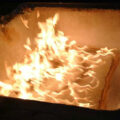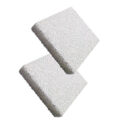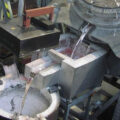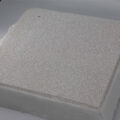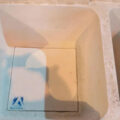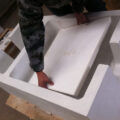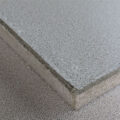The metal filtration and purification process has been promoted and applied in the foundry industry. At present, the main filtration products in the market are ceramic foam filters and straight-hole filters. According to the filter material, they are divided into silicon carbide, zirconium, and oxide corundum. The most widely used is the ceramic foam filter.

Since the ceramic foam filter has a three-dimensional three-dimensional structure, the internal pores have a strong slag-retaining capacity, and the surface area is large, and it has super adsorption capacity. It can capture micron-sized slag and small bubbles, so it has a better filtering effect. At the same time, the foam ceramic filter has a good rectification effect.
The advantages of straight hole filters are mainly high dimensional accuracy, not easy to remove slag. The clay sand production line only filters large slags, so the filtering effect is not as good as the foam ceramic filter.
By adopting the method of in-mold filtration, the original complex slag-retaining pouring system is simplified as much as possible, so that the process of castings can be improved. The process of casting is generally open or semi-open. The scour of the core reduces the formation of secondary oxidation slag and entrapment of gas; the open casting system is generally used for large iron castings, and the semi-open trial casting system is used for medium and small parts. The filter should not be the flow control point of the casting speed.
There are many options for the placement of the filter. It is necessary to select the filter as close as possible to the casting according to the size, material, molding process and other conditions of the produced casting. The effect of placing it on the runner is better than the sprue cup and the sprue. When filtering, consider the balance of the flow of each chip to avoid the hidden danger of single chip overload.
Selection of Metal Filtration Filter
The choice of Metal Filtration filter size must first consider the safety factor used, because the filter ability to withstand the flushing of molten metal is limited, and the loss of overload use is huge. The general selection principle:
First of all, it is necessary to ensure that the amount of molten metal filtration is safe, which requires the size of the filter to be sufficient, including the length, and large pieces require a multi-piece design.
To meet the pouring time required for castings, because the filter has a certain resistance, it is necessary to verify whether the effective area of the filter can meet the normal filling time, especially for thin-walled castings. Adjust the number of filter pieces appropriately according to the amount of molten metal slag to prevent the slag from clogging the holes at the later stage of pouring, which causes the effective area to decrease, and the effective area is usually calculated as 20%-25% of the filter area.




